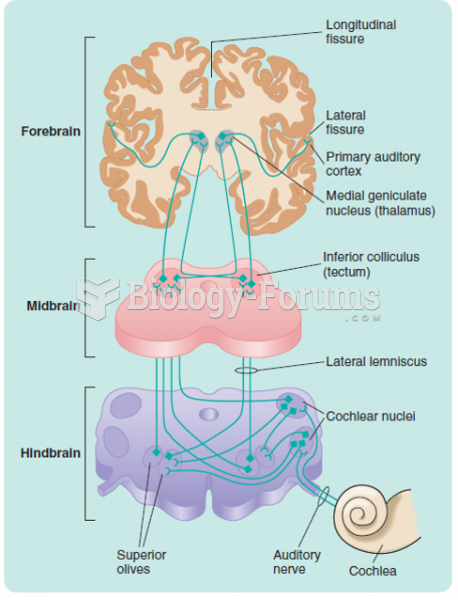|
|
|
Human neurons are so small that they require a microscope in order to be seen. However, some neurons can be up to 3 feet long, such as those that extend from the spinal cord to the toes.
There are over 65,000 known species of protozoa. About 10,000 species are parasitic.
About 100 new prescription or over-the-counter drugs come into the U.S. market every year.
The people with the highest levels of LDL are Mexican American males and non-Hispanic black females.
Bisphosphonates were first developed in the nineteenth century. They were first investigated for use in disorders of bone metabolism in the 1960s. They are now used clinically for the treatment of osteoporosis, Paget's disease, bone metastasis, multiple myeloma, and other conditions that feature bone fragility.







